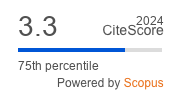Article | Open Access
Visualizing the Impacts of Movement Infrastructures on Social Inclusion: Graph-Based Methods for Observing Community Formations in Contrasting Geographic Contexts
| Views: | 4391 | | | Downloads: | 1953 |
Abstract: In this article we describe some innovative methods for observing the possible impacts of roads, junctions and pathways (movement infrastructures), on community life in terms of their affordances and hindrances for social connectivity. In seeking to observe these impacts, we combined a range of visualization research methods, based on qualitative points-data mapping, graphic representation and urban morphological analysis at local and global geographic scales. Our overall aim in this study was to develop exploratory methods for combining and visualizing various kinds of data that relate to urban community formations in contrasting urban contexts. We focused our enquiry on the perspectives of adolescents in two urban contexts: Liverpool, UK, and Medellín, Colombia. While they contrast in their geo-political and cultural characteristics, these two cities each present polarized socio-economic inequalities across distinctive spatial patterns. We found that adolescents in these cities offer generally localized, pedestrian perspectives of their local areas, and unique insights into the opportunities and challenges for place-making in their local community spaces. We gathered the communities’ local perspectives through map-making workshops, in which participants used given iconographic symbols to select and weight the social and structural assets that they deemed to be significant features of their community spaces. We then sampled and visualized these selective points data to observe ways in which local community assets relate to infrastructural affordances for movement (in terms of network integration). This analysis was based on the theory and method of Space Syntax, which provides a model of affordances for movement across the urban network over various scales of network configuration. In particular, we sought to determine how city-scale movement infrastructures interact with local-scale infrastructures, and to develop methods for observing ways in which these interactions have positive or negative consequences for community formations.
Keywords: movement infrastructures; participatory methods; urban morphology; Space Syntax; visualization research methods
Published:
© Jamie O'Brien, Laura García Vélez, Martin Zaltz Austwick. This is an open access article distributed under the terms of the Creative Commons Attribution 4.0 license (http://creativecommons.org/licenses/by/4.0), which permits any use, distribution, and reproduction of the work without further permission provided the original author(s) and source are credited.


